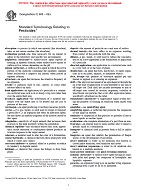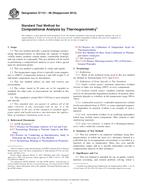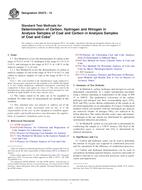1.1 These practices cover the evaluation of all plastic materials including cast, hot-molded, cold-molded, laminated resinous products, and sheet materials for resistance to chemical reagents. These practices include provisions for reporting changes in weight, dimensions, appearance, and strength properties. Standard reagents are specified to establish results on a comparable basis. Provisions are made for various exposure times, stress conditions, and exposure to reagents at elevated temperatures. The type of conditioning (immersion or wet patch) depends upon the end-use of the material. If used as a container or transfer line, specimens should be immersed. If the material will only see short exposures or will be used in close proximity and reagent may splash or spill on the material, the wet patch method of applying reagent should be used.
1.2 The effect of chemical reagents on other properties shall be determined by making measurements on standard specimens for such tests before and after immersion or stress, or both, if so tested.
1.3 The values stated in SI units are to be regarded as standard. The values given in brackets are for information only.
This standard does not purport to address all of the safety concerns, if any, associated with its use. It is the responsibility of the user of this standard to establish appropriate safety and health practices and determine the applicability of regulatory limitations prior to use.
Note 1
This standard and ISO 22088 Part 3 address the same subject matter, but differ in technical content (and the results cannot be directly compared between the two test methods).
Product Details
- Published:
- 04/01/2006
- Number of Pages:
- 7
- File Size:
- 1 file , 120 KB
- Redline File Size:
- 2 files , 220 KB


